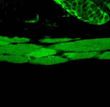HSP70-1A (HSPA1A) Rabbit Polyclonal Antibody [Clone ID: N/A]
Frequently bought together (3)
beta Actin Mouse Monoclonal Antibody, Clone OTI1, Loading Control
USD 200.00
Other products for "HSP70-1A"
Specifications
| Product Data | |
| Clone Name | N/A |
| Applications | IF, WB |
| Recommended Dilution | WB: 1:25,000, IP: 1:100 |
| Reactivities | Human, Mouse, Rat, Dog, Guinea Pig, Monkey, Pig, Sheep, Beluga, Cow, Hamster, Coral, Tomato, Tobacco, Dogfish, Hagfish, Carp |
| Host | Rabbit |
| Clonality | Polyclonal |
| Immunogen | Full length human protein Hsp70 |
| Formulation | Rabbit antiserum |
| Concentration | lot specific |
| Purification | Rabbit antiserum |
| Conjugation | Unconjugated |
| Storage | Store at -20°C as received. |
| Stability | Stable for 12 months from date of receipt. |
| Gene Name | heat shock protein family A (Hsp70) member 1A |
| Database Link | |
| Background | Hsp70 genes encode abundant heat-inducible 70-kDa hsps (hsp70s). In most eukaryotes hsp70 genes exist as part of a multigene family. They are found in most cellular compartments of eukaryotes including nuclei, mitochondria, chloroplasts, the endoplasmic reticulum and the cytosol, as well as in bacteria. The genes show a high degree of conservation, having at least 5O% identity . The N-terminal two thirds of hsp70s are more conserved than the C-terminal third. Hsp70 binds ATP with high affinity and possesses a weak ATPase activity which can be stimulated by binding to unfolded proteins and synthetic peptides . When hsc70 (constitutively expressed) present in mammalian cells was truncated, ATP binding activity was found to reside in an N-terminal fragment of 44 kDa which lacked peptide binding capacity. Polypeptide binding ability therefore resided within the C-terminal half . The structure of this ATPbinding domain displays multiple features of nucleotide binding proteins .All hsp70s, regardless of location, bind proteins, particularly unfolded ones. The molecular chaperones of the hsp70 family recognize and bind to nascent polypeptide chains as well as partially folded intermediates of proteins preventing their aggregation and misfolding. The binding of ATP triggers a critical conformational change leading to the release of the bound substrate protein . The universal ability of hsp70s to undergo cycles of binding to and release from hydrophobic stretches of partially unfolded proteins determines their role in a great variety of vital intracellular functions such as protein synthesis, protein folding and oligomerization and protein transport. |
| Synonyms | HEL-S-103; HSP70-1; HSP70-1A; HSP70.1; HSP70I; HSP72; HSPA1 |
| Note | Detects a ~70kDa protein corresponding to the molecular mass of inducible Hsp70 on SDS PAGE immunoblots. May cross-react with Hsc70 at lower dilutions. |
| Reference Data | |
| Protein Pathways | Antigen processing and presentation, Endocytosis, MAPK signaling pathway, Prion diseases, Spliceosome |
Documents
| Product Manuals |
| FAQs |
| SDS |
{0} Product Review(s)
0 Product Review(s)
Submit review
Be the first one to submit a review
Product Citations
*Delivery time may vary from web posted schedule. Occasional delays may occur due to unforeseen
complexities in the preparation of your product. International customers may expect an additional 1-2 weeks
in shipping.






























































































































































































































































 Germany
Germany
 Japan
Japan
 United Kingdom
United Kingdom
 China
China





